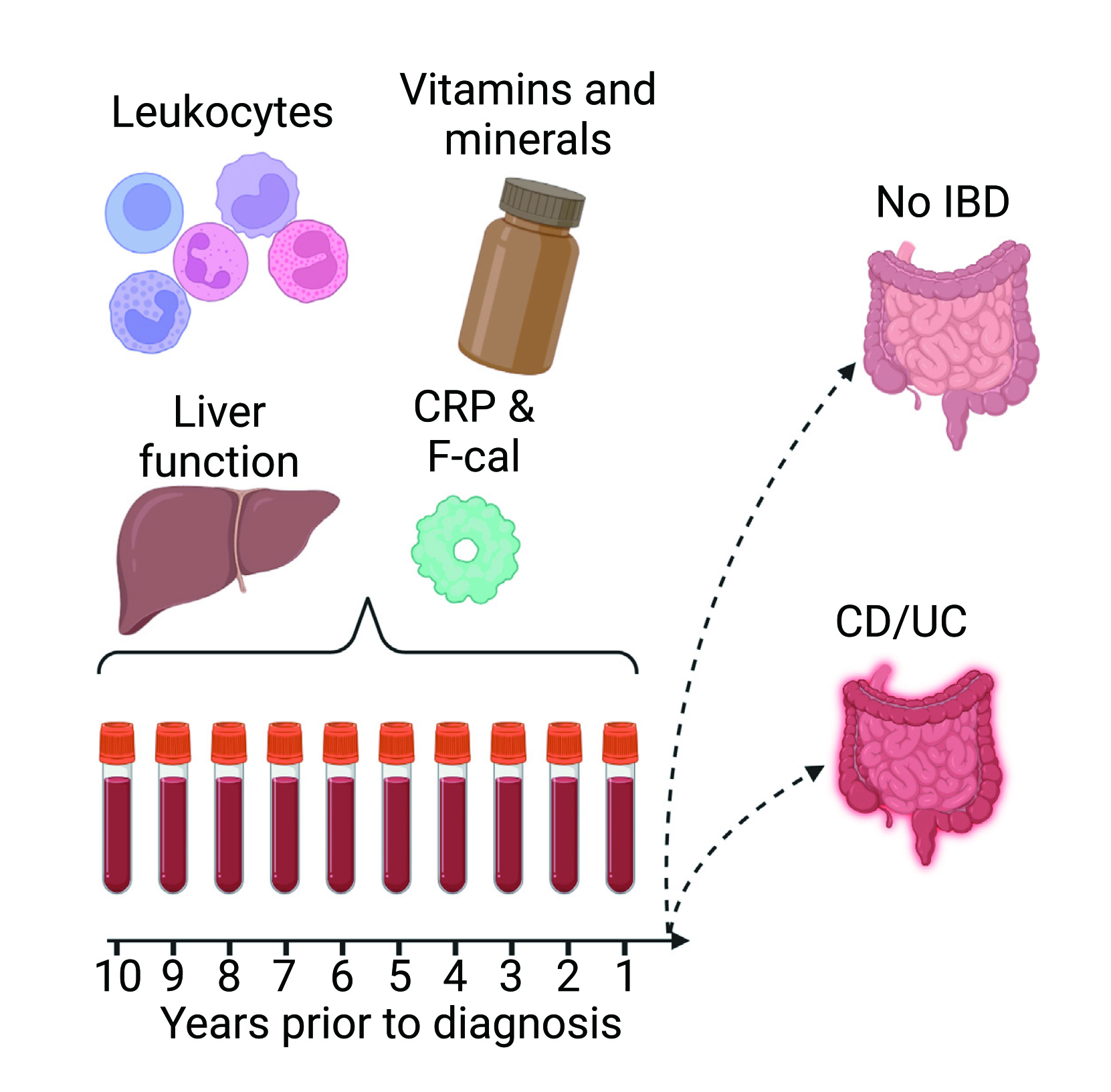Inflammatory bowel disease (IBD) has a higher prevalence in developed western countries than in East Asia, with about 120 to 200 cases per 100,000 for ulcerative colitis (UC) and 50 to 200 cases per 100,000 for Crohn¡¦s Disease (CD) in 2014, and the numbers are on the rise. Timely medical intervention is necessary to minimise the extent of bowel damage in IBD patients, which underscores the need for a better understanding of IBD during the preclinical phase. Scientists from Aalborg University in Copenhagen analysed the measurements from 17 haematological and biochemical parameters in over 20000 IBD patients to identify biomarkers of clinical interest. It was discovered that levels of neutrophils, leukocytes and platelets were higher in CD cases than in healthy control up to 8 years before a diagnosis of CD; however, five years before a CD diagnosis, levels of monocyte also became higher in those who developed CD than in control cases, while that of iron, albumin and bilirubin decreased. A similar trend was observed in UC patients, yet the difference in levels of biomarkers was not evident until three years before the diagnosis of UC. Nevertheless, most of the changes detected (except faecal calprotectin) were within normal ranges of the respective tests, thereby increasing the difficulty of detecting abnormalities in the biomarkers in clinical practice (Figure 2). This study provided insights into the immunological changes during the preclinical phase of IBD and had future implications for developing IBD treatment strategies and therapeutic targets.
 Figure 2. Graphical abstract of the study Adapted from Vestergaard MV, et al. 2023.
Figure 2. Graphical abstract of the study Adapted from Vestergaard MV, et al. 2023.
References
Ng SC, et al. Inflamm Bowel Dis. 2016;22(8):1954-1960.
Vestergaard MV, et al. Cell Rep Med. 2023 Nov 21;4(11):101263





